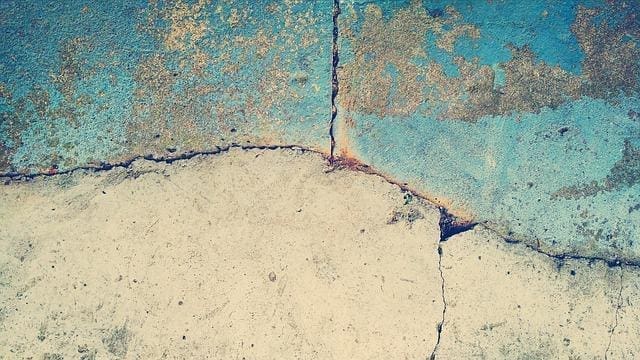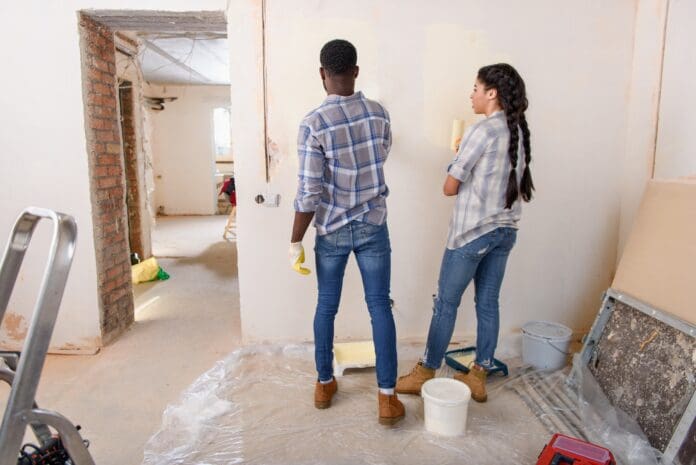Concrete is a popular choice for home redesign projects. It’s durable, looks great, and can be installed in a variety of ways. However, concrete can also present some common issues if it isn’t installed or maintained properly. In this article, you will learn about some of the most common concrete issues when it comes to redesigning your home and how to avoid them.
Moving Blocks
This is something that annoys lots of homeowners in Maryland. They usually opt for calling Baltimore concrete lifting specialists who can help them with the issue of this moving block. The thing is you can avoid this by simply getting smart about it during the design process of your home.
For starters, you need to make sure that the weight of your house is evenly distributed on the foundation. This way, there will be no weak spots where the concrete might sink and create unevenness.
You should also pay attention to the soil type in your area. If it’s sandy or has a lot of clay, that’s not good news for your concrete slab. These types of soil are known to shift and move over time, which can cause cracking and other damage to your foundation.
In addition, you should be aware of how to dispose of concrete and proper concrete removal methods.
To avoid all of these issues, it’s best to consult with a professional before starting your project. They will be able to assess the situation and give you the best advice on how to proceed.
Cracks
Cracks are the most common annoyance concrete can dish out, but often they’re cosmetic rather than structural. The best way to avoid cracks is to use a thicker concrete mix and place control joints in the slab before it sets.
Control joints are grooves cut into the concrete while it’s still wet that help control where cracks will form. They should be placed at regular intervals and no more than ten feet apart. The depth of the groove should be about one-fourth the thickness of the slab.
Once the concrete cracks, you can clean up any rough edges with a chisel and hammer or a grinder fitted with a masonry wheel. If the crack is deeper than ¼ inch, fill it with sandable caulk made specifically for concrete cracks or epoxy designed for cracks in concrete.
Use a putty knife to smooth the caulk flush with the surface, then give it 24 hours to cure. Once it’s cured, sand the area smooth with 120-grit paper, then vacuum up the dust. Finish by painting or staining the area to match the surrounding concrete.
Curling
This issue can happen for multiple reasons. These are the following:
- The ground underneath the concrete slab is not level
- There is too much water in the mix
- The subsoil is too soft
- The reinforcement bars are not properly positioned
- The concrete was placed during cold weather
All these reasons can be easily fixed by taking the necessary precautions when doing your pour. Make sure to have a level base, use the right amount of water in your mix, and place your reinforcement bars correctly. By doing so, you will avoid curling issues and have a beautiful, long-lasting concrete surface.
Curling may be unsightly, but it can also cause trip hazards. Be sure to fix any curling issues as soon as possible to avoid any accidents. It is a common issue, but it is easily fixed with the right knowledge and tools.
Crazing
To avoid crazing, use a low water-to-cement ratio when mixing your concrete. The lower the water to cement ratio, the denser the concrete, and crazing is less likely to occur.
Another way to prevent crazing is to use a plasticizer or superplasticizer in your concrete mix. This will help to increase the workability of the concrete without adding too much water, which can lead to crazing.
Finally, be sure to cure your concrete properly. Curing helps the concrete retain moisture so that it can reach its full strength and hardness potential. Improper curing is one of the most common causes of crazing in concrete.
Discoloration

Concrete landscaping is essential when you want to sell your home for a larger profit. If it starts to show discoloration, however, you may have to spend money on concrete repairs.
Most discoloration is caused by efflorescence, which happens when water seeps into the concrete and dissolves minerals in the concrete mix. The water then evaporates, leaving behind the minerals, which appear as a white powder on the surface of the concrete.
To avoid this issue, make sure that your landscaping contractor uses a waterproofing sealer on your concrete patio, driveway, and walkways. This will create a barrier between the water and the concrete so that efflorescence cannot occur.
Another way to avoid discoloration is to choose a light-colored concrete mix. Darker colors tend to absorb more heat from the sun, which can cause the concrete to discolor.
Buckling
An easy way to buckle is to avoid it altogether by ensuring that your concrete is always well-cured and never overworked. If you do end up buckling, though, don’t despair! There are a few ways to fix it. One is to jack up the sunken slab and fill in the gaps with grout or mortar.
Another is to remove the damaged portion of concrete and replace it with new concrete. Whatever method you choose, be sure to consult a professional before proceeding. With their help, buckling won’t be an issue for long.
Scaling
Scaling happens because the surface of the concrete dries faster than the rest of it, causing cracks. To avoid scaling, make sure to cure and prepare your concrete properly.
Scaling can cause unsound and weak concrete that will crumble and flake. It can also cause scaling to pop off in large pieces, which can be dangerous.
If you see scaling on the surface of your concrete, it’s important to remove it right away. Chipping or sanding the scaling away is usually the best way to remove it. If the scaling is severe, you may need to have the entire area re-paved.
A contractor will probably know how to properly scale and can provide you with an estimate for the repairs. Be sure to get multiple estimates and compare them before hiring anyone.
You need to take good care of concrete surfaces because when something bad happens, it’s a costly repair. That’s why you need to get someone who knows how to lift it up once the blocks start moving. Some other common issues are cracks, curling, crazing, discoloration, buckling, and scaling. All these can be avoided or fixed, and you should never hesitate to do so!



























